Growing root crops in containers is a fantastic way to enjoy fresh produce even if you have limited space.
Whether you have a balcony, patio, deck, or even a windowsill, container gardening can provide you with a bountiful harvest.
Root crops such as carrots, turnips, beets, parsnips, potatoes, onions, radishes, rutabagas, and turnips are perfect for container gardening. They require little space and can be easily grown in pots, making them an ideal choice for those with limited room to garden.
Containers for Growing Plants at Amazon;
All you need to grow roots in containers is the right container and proper care.
Here are seven tips to help you successfully grow root crops in containers–pots, grow bags, tubs, and windowboxes.

Tip #1: Choose the root crop and know the time to plant
You need to know the time of year to plant the root crop you want to grow. Nearly all root crops are cool season crops—beets, carrots, radishes, turnips—but not all. Sweet potatoes are a warm-weather crop. And potatoes and onions like to get their start in cool weather but finish in warm weather.
You must know the growing temperatures your crops favor. You can easily get this growing temperature information by looking up the crop name in the Index here at Harvettotable.com and then clicking to get the in-depth information you need.
Plant most root crops in early spring for a late spring or early summer harvest and plant them again in late summer for a fall into winter harvest. Turnips, for example, can be planted in spring for a late spring harvest and then again in late summer for harvest in the fall and winter months.
Be sure to research the specific crop you want to grow to ensure it is suitable for your climate and growing season.
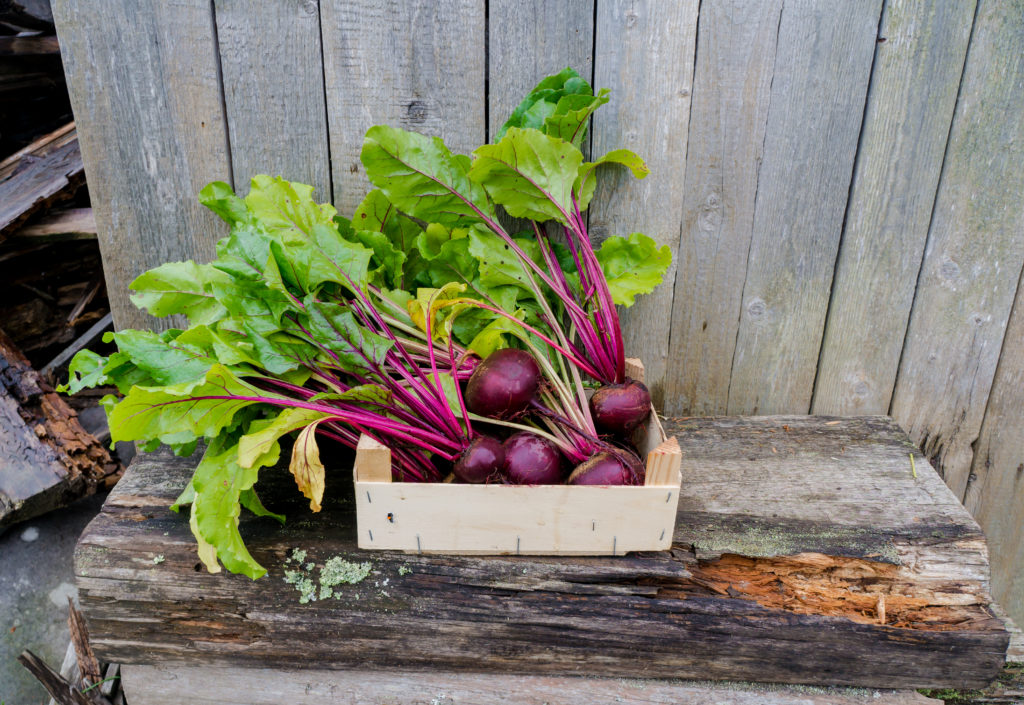
Tip #2: Choose a container
To grow a good root crop to harvest, you need to choose the right container.
Different root crops have varying requirements for the depth and width of the container they need to grow in. For example, most carrots have a long taproot and require a deeper container than radishes or beets. Be sure to choose containers that are appropriate for the specific root crops you want to grow.
For most root crops, choose a container that is at least 10 to 12 inches deep, at least 12 inches wide or wider depending on the number of plants you want to grow. Root crops like miniature carrots and radishes require a container about 6 to 8 inches deep, while other crops like beets, carrots, and turnips will thrive in deeper containers that are at least 12 to 14 inches deep.
You can use any type of container–terra cotta or plastic pots, buckets, or even grow bags, but make sure the container you choose has adequate drainage to prevent waterlogging.
Generally, clay or plastic pots are ideal as they have adequate drainage holes that allow excess water to drain out, preventing the roots from rotting. On the other hand, you can also use wooden boxes and crates, but make sure to line them with plastic before filling them with soil to prevent the wood from rotting.
One of the most ideal containers for growing vegetables including root crops is fabric grow bags. They are lightweight, often have handles to make them portable, and they are easy to empty and store after the harvest.
Some root crops, such as carrots, require deep containers to grow properly, while others, like radishes, can grow in shallower containers.
A pot that is too small will restrict the growth of your crop. Decide the number of plants you want to grow before choosing the container.
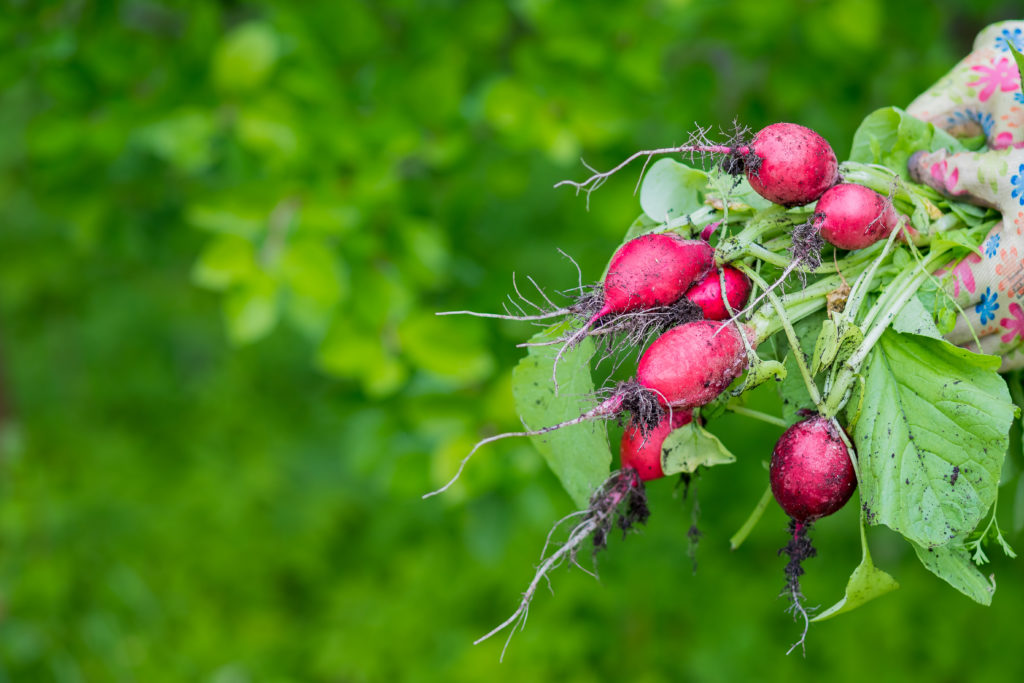
Tip #3: Prepare the soil
Another important consideration is the type of soil you use in your container. Root crops require loose, well-draining soil that is rich in organic matter. Choose a high-quality potting mix that contains a good amount of organic matter and is well-draining. Adding compost or other organic fertilizers will also help keep your plants healthy and thriving.
A well-draining, loose soil with a pH between 6.0-7.0 is a good choice for root crops. If you want to mix your own growing medium, a good rule of thumb is to use a mix of equal parts aged compost, pulverized topsoil, and a combination of worm castings, spent coffee grounds, and perlite.
Avoid using garden soil as it may be too heavy for the pot and can contain disease-causing pathogens. Use a potting mix that is made for vegetables and has added nutrients such as aged compost and worm castings.
Fill the container with potting mix, leaving about two inches of space between the soil and the rim of the container. Plant the seeds about 1/4 inch deep, spacing them about 2 to 4 inches apart depending on the crop.
Place the pot in a spot that receives at least six hours of direct sunlight each day. Choose a spot that gets good air circulation.
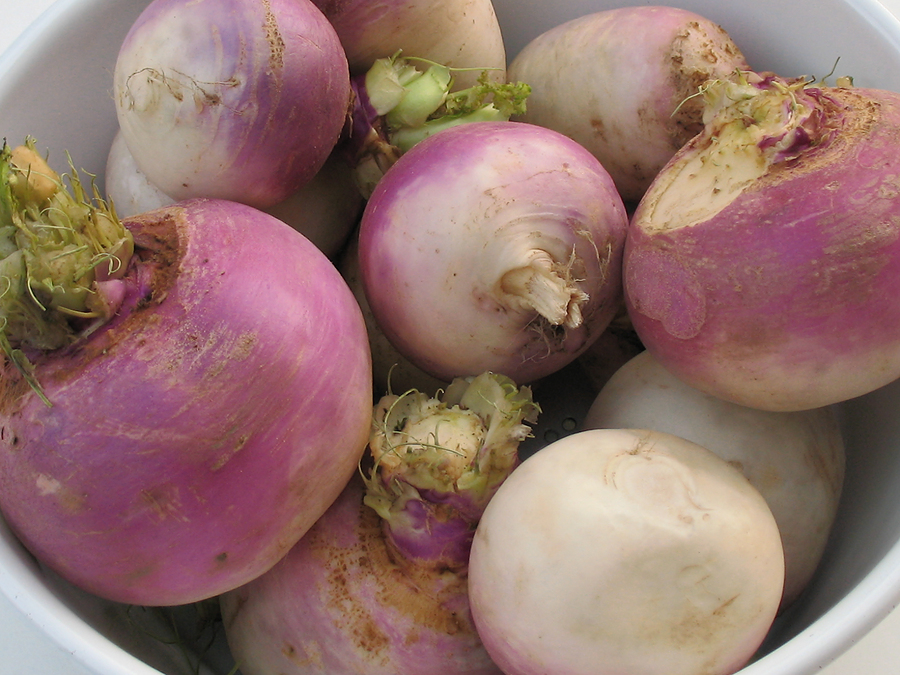
Tip #4: Sow the seeds
When it comes to seeds, choose a quality brand that has high germination rates. You can start by choosing a few different varieties to experiment with.
After filling the pot, moisten the soil slightly and create small indentations on the soil surface where you will plant your seeds. The indentations should be about half an inch deep and two to four inches apart depending on the crop you are growing.
Drop one to two seeds in each hole. Cover the seeds with a thin layer of potting mix and water gently.
Follow the instructions on the seed packet, making sure they are planted at the appropriate depth.
Keep the soil moist for the next few weeks. When the plants begin to emerge, thin or remove the weakest seedlings so that each plant has enough space to grow.
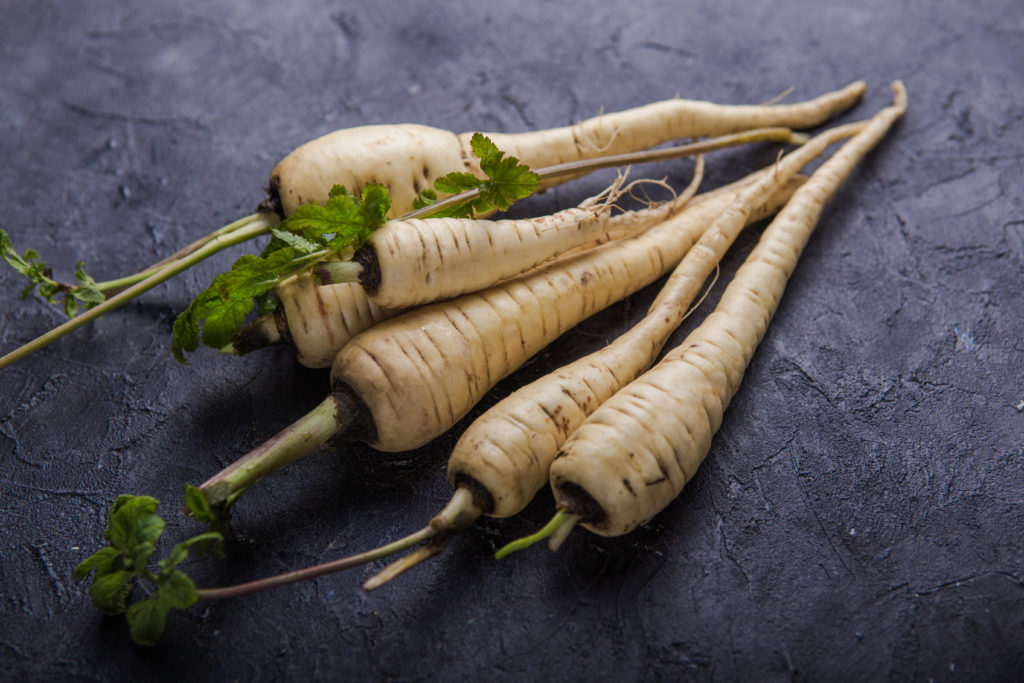
Tip #5: Water, feed, and care for plants
All vegetables need six to eight hours of direct sunlight per day, so place your container in a sunny spot.
Watering roots
Watering is an important aspect of growing root crops in pots. Keep the soil consistently moist to ensure steady, uninterrupted growth. Consistent moisture is important for root texture and flavor. Keep the soil evenly moist, but also be careful not to overwater.
One effective method is to water deeply once a week, and then allow the soil to dry slightly but not completely before watering again. Totally dry soil can cause roots to become woody and bitter.
Monitor soil moisture regularly, as containers can dry out more quickly than garden beds.
You can check soil moisture levels by sticking your finger about an inch into the soil. If it feels dry at this depth, it’s time to water.
Avoid getting water on the leaves or stems, as this can lead to fungal diseases.
Feeding roots
Fertilize root crops with a high-quality fertilizer every two weeks to ensure their health and growth. Root crops are heavy feeders and require plenty of nutrients to grow strong and healthy.
A good all-purpose liquid organic fertilizer applied every two weeks can help ensure your plants have everything they need to thrive. Alternatively, you can add slow-release organic fertilizer pellets to the potting mix when planting.
Be careful not to over-fertilize root crops, as this can cause excessive leaf growth at the expense of root development. Follow the instructions on the fertilizer package and adjust as needed based on the growth of your plants.
A balanced fertilizer, such as a 5-5-5 blend, is ideal for root crops. You can also add bone meal or blood meal to your soil mix to boost the nutrient content. Make sure to mix in your fertilizers and soil amendments thoroughly before planting.
Caring for roots
Monitor plants for signs of pests, such as aphids or flea beetles, and treat them as needed using insecticidal soap or neem oil. As root crops grow, thin them out to about 4 inches apart to give them room to mature. Check the seed packets for suggested spacing at maturity.
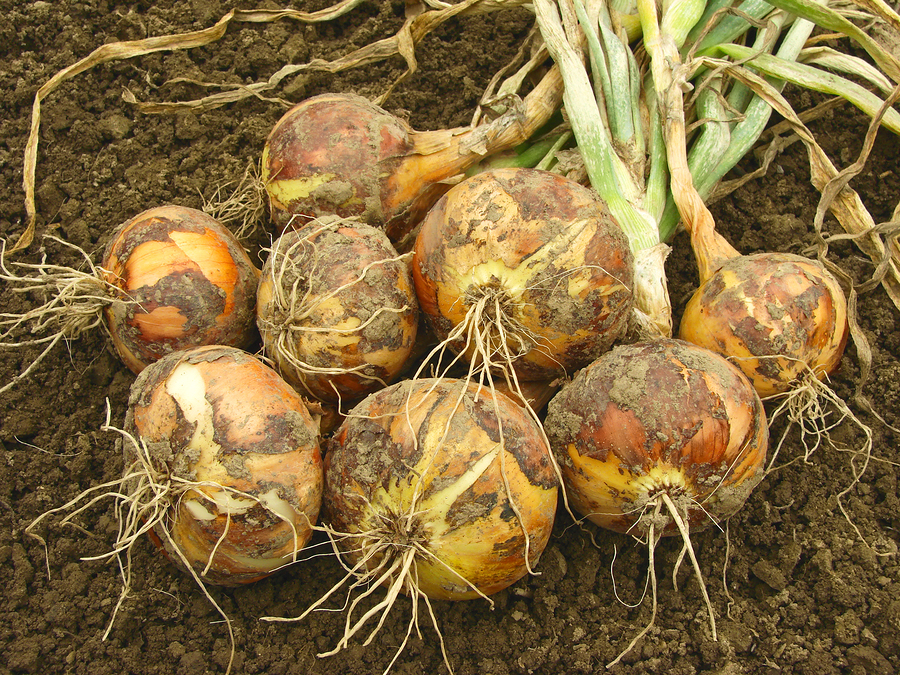
Tip #6: Harvest the roots
When do you harvest your root vegetables? As root crops near maturity—or simply edible size, you can begin to harvest them.
Different root vegetables mature at different times, so make sure to keep a calendar or mark the expected harvest dates in your garden. Check seed packets at planting time to note the number of days to harvest for the variety of root crops you are growing.
Generally, you should harvest root vegetables when they near their maximum size, which varies depending on the type of vegetable. For example, most carrots are best harvested when they reach 1 to 2 inches in diameter, while beets should be harvested when they are around 2 to 3 inches in diameter. Again, check the seed packet to learn about days to maturity and mature size for the crops you are growing.
Root crops can be harvested by simply pulling them out of the soil. Lifting root crops from slightly moist soil will not be difficult. If you find lifting plants difficult, moisten the soil then use a hand fork to loosen the soil away from the crown of the plant and the root below; loosened soil will make harvesting easier.
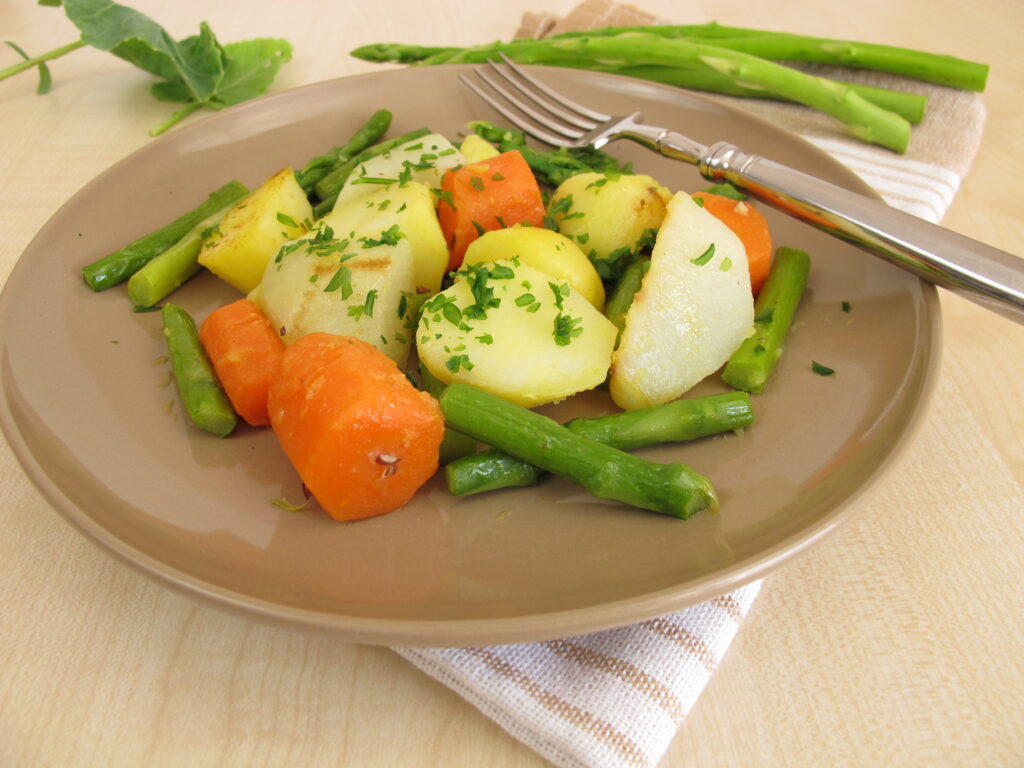
Tip #7: Preparing roots in the kitchen
Enjoy your homegrown root vegetables roasted, steamed, mashed, stir-fried, or added to your favorite soup or salad.
Root vegetables are a fantastic staple in any kitchen. These vegetables are packed full of nutrients, making them a healthy and delicious option for meals. Root vegetables are also incredibly versatile and can be used in a variety of different ways. Here are some ways to cook root vegetables.
Roasting roots
Roasting is a popular way to cook root vegetables. This method brings out their natural sweetness and creates a slightly charred exterior. Simply chop your vegetables into bite-sized pieces and toss them in some olive oil, salt, pepper, and any other desired herbs or spices. Roast in the oven at 400°F for 25-30 minutes or until they are brown and tender.
Steaming or boiling roots
Another way to cook root vegetables is by steaming or boiling them. This method is great for retaining the nutrients in root vegetables. Be sure to cut them into uniform pieces to ensure even cooking. Boil or steam for 10-15 minutes until they are fork-tender. Add some butter or a seasoning blend for added flavor.
Mashing roots
Mashing root vegetables is another great way to use them in meals. This technique is perfect for creating a side dish or a topping for a savory pie. First, boil or steam the vegetables until they are fork-tender. Then, mash them with a fork or a potato masher. Add some butter, cream, or spices to achieve the desired consistency and flavor.
Stir-frying roots
To stir-fry root vegetables, start by washing and peeling them, if necessary. Then, chop them into bite-size pieces. Heat your wok or skillet over high heat and add some oil. Once the oil is hot, add your vegetables and stir-fry them for a few minutes until they’re slightly browned and crispy. You can use a variety of root vegetables for stir-frying, such as carrots, parsnips, turnips, radishes, and onions.
Whether roasted, boiled, steamed, mashed, or stir-fried, root vegetables offer a delicious and healthy addition to any meal. By incorporating these hearty vegetables into your diet, you can enjoy their unique texture and flavor while also reaping the numerous health benefits they offer.
Growing root crops in a pot is a fun, rewarding experience that can provide you with fresh and healthy vegetables. With some preparation and care, you can easily grow roots in a pot or grow bag on your balcony or patio and enjoy the delicious taste of these nutritious vegetables.
Related articles:
See growing tips for these crops: beets, carrots, onions, parsnips, potatoes, radishes, rutabaga, and turnips.
Garden Planning Books at Amazon:
- Kitchen Garden Grower’s Guide Vegetable Encyclopedia
- Vegetable Garden Grower’s Guide
- Tomato Grower’s Answer Book



